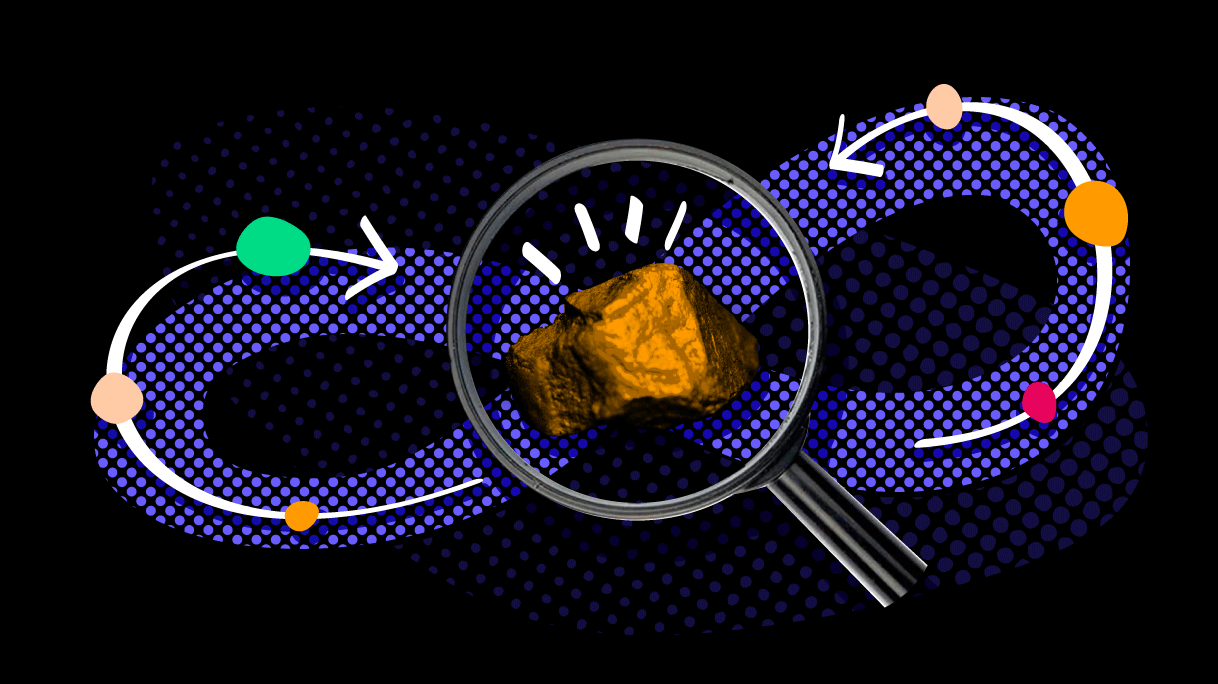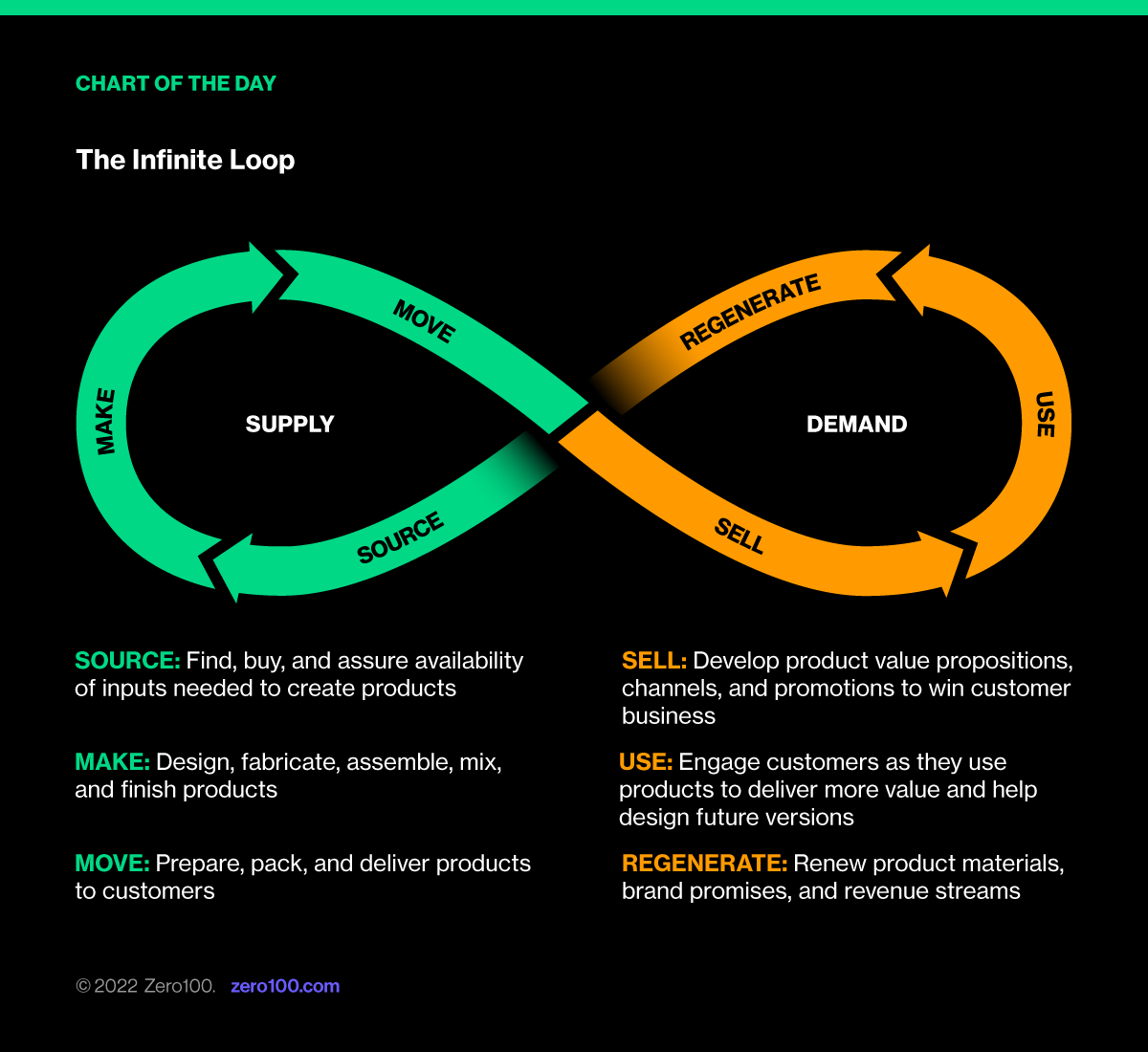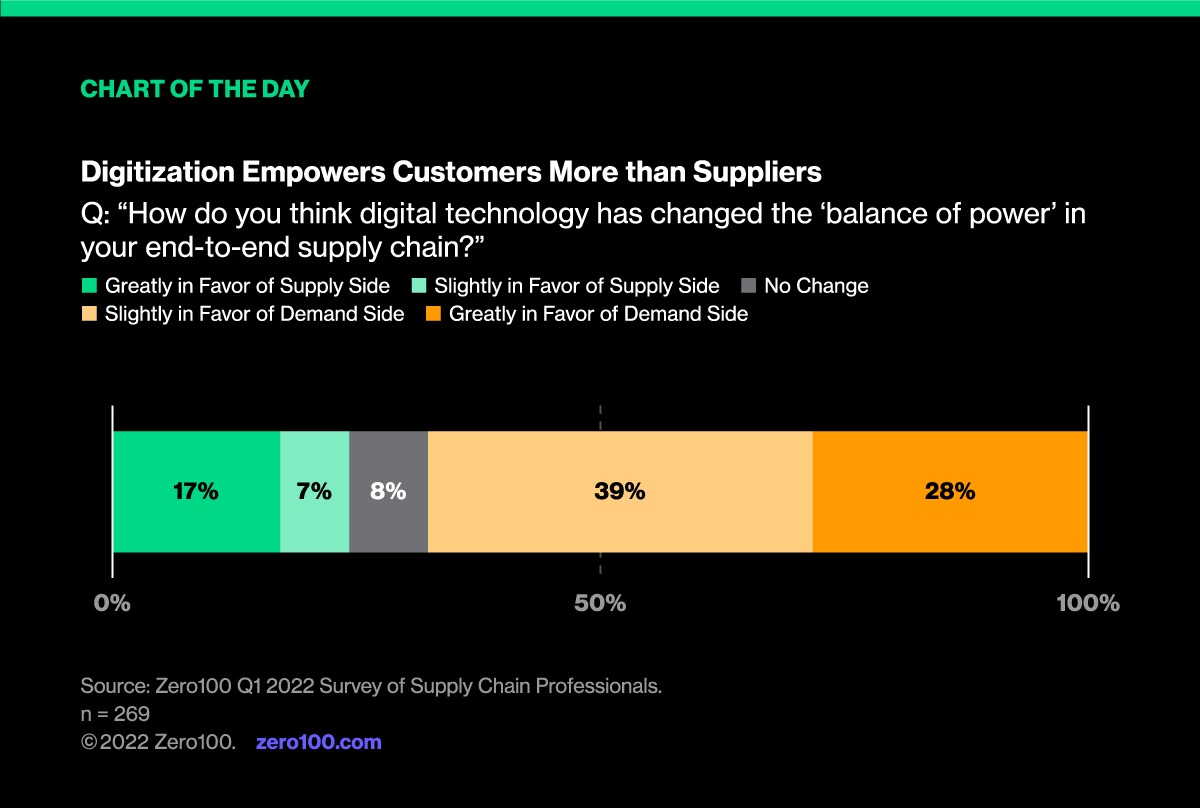
Circular Supply Chain Strategy: Finding the Golden Nugget
The Loop model is how Zero100 approaches digitizing and decarbonizing supply chain. With today’s supply and demand imbalances, this framework helps explain the tension to colleagues outside of supply chain.
After last month's Zero100 Forum in Miami, I've had a series of discussions about how our Loop framework might help crystallize strategic plans for digitization, decarbonization and, of course, growth. This typically involves making sense of dozens of initiatives in-flight or on the roadmap, getting buy-in from other business leaders, and leaving everyone with a crisp message about how supply chain is helping the business win. Where do you start?
Not at the beginning.
Customers Still Set the Agenda
Classical supply chain strategy applied end-to-end process thinking to cut costs, improve service and enable the business. “Plan, source, make, deliver” offered a powerful way to drive efficiency.
Then the idea of “demand driven” flipped it from asset-oriented push to demand-pull starting with the customer's moment of truth at the retail shelf (thanks to Procter & Gamble for formalizing the idea as the “Consumer Driven Supply Network”). It was a brilliant, simple clarity on what to do and why.
Today, strategy is more complicated. We need to build resilience and drive growth, but also digitize for agility and decarbonize for sustainability. Our business colleagues are more aware of supply chain, but still impatient if we get too detailed. The goal is a post-COVID strategy that is efficient, demand-driven, flexible, and responsible. Circular, but with a twist that regenerates both the planet and the business.

The infinite Loop supply chain model is customer-centric and includes the buying experience, product use, and end of life. This three-step version of the demand chain (sell, use, regenerate) takes a business leader's perspective on how and where the complete customer lifecycle is improved by supply chain capabilities (source, make, move). “Plan”, by the way, sits at the intersection of supply and demand and is as big as you can make it—more on that later.
Power Imbalance Makes It Urgent
Digitization is changing everything, but it is so far empowering customers much more than suppliers. Recent Zero100 survey data decisively says that digitization has tilted the balance of power in favor of demand.

Strategy starts with analyzing specific hotspots of digital demand and countering with strategic initiatives that digitize supply chains to meet the challenge and/or seize the opportunity.
Three Loop examples show how this is underway:
- Sell-Move: When e-commerce arose to digitally transform the “sell” function in demand chains, the successful response was a scale-up in digitization of “move” on the supply side. Amazon led this but everyone from Wayfair to Walmart has followed.
- Regenerate-Source: Spiking social media pressure from consumers demanding business sustainability (“regenerate”) drove some big brands (Unilever, Nike) to digitally enhance their “source” capabilities with deeper tracking of things like palm oil harvest deforestation or fair labor in garment production.
- Use-Make: Better digital analytics driving demand for improved capital equipment uptime and ROI (“use”) led companies like Caterpillar, Thermo-Fisher Scientific, and Konecranes to engineer (“make”) IoT-enabled product-as-a-service capabilities into their offerings.
Writing the Document
Boiling it down to a one-page document is possible by reverse engineering the high points of your CEO's stated strategy from a customer experience perspective and then using the Loop to map demand chain pressure points to supply chain responses. This lets you break the boredom-inducing habit of speaking in terms of process and instead show a 1-for-1 deal mapping each of your initiatives to a specific demand chain pressure point. The Loop is a framework for telling a customer-centric story without dragging non-supply chain people through stuff they don't need to understand.
Skipping the process and tech details is fine as long as you establish trust. One approach is to dive deep on a meaningful supply chain example that unlocks strategic advantage—a.k.a., the golden nugget. Examples like Apple's use of application-specific-standard-components in the iPad, AB Inbev's Zé last mile cold chain delivery, or Inditex's fast fashion system all show how deeply supply chain reaches into each area of competitive strategy (channels, user experience, cost leadership). It may seem crazy to use so much of your audience attention budget walking through a single example, but the credibility earned is probably worth it.
Strategy is about picking your battles and making sure you can win. Start with victory and work backwards from there.
Critical Reading
THE ECONOMIST
ESG Should Be Boiled Down to One Simple Measure: Emissions
Commentary: While well-meaning, the term ESG risks distracting us from the most pressing issue on hand today – climate change. It provides no coherent guide for how to address the critical trade-offs we will inevitably face.
#esg #climatechange
THE WASHINGTON POST
Amazon Will See You Now: Tech Giant Buys Health-Care Chain for $3.9 Billion
Commentary: In a major expansion of their healthcare ambitions, Amazon has purchased One Medical, giving them a physical network of healthcare offices and providing them with tech to enable virtual doctor visits. Concern has surfaced over privacy consequences surrounding Amazon's healthcare efforts.
#amazon #healthcare
THE WALL STREET JOURNAL
Commentary: Delayed supplier payments resulting from pandemic-induced supply chain disruptions faced over the past two years have spurred businesses to consider how they can help their suppliers, and themselves. Supply chain financing may be the answer.
#supplier #financing